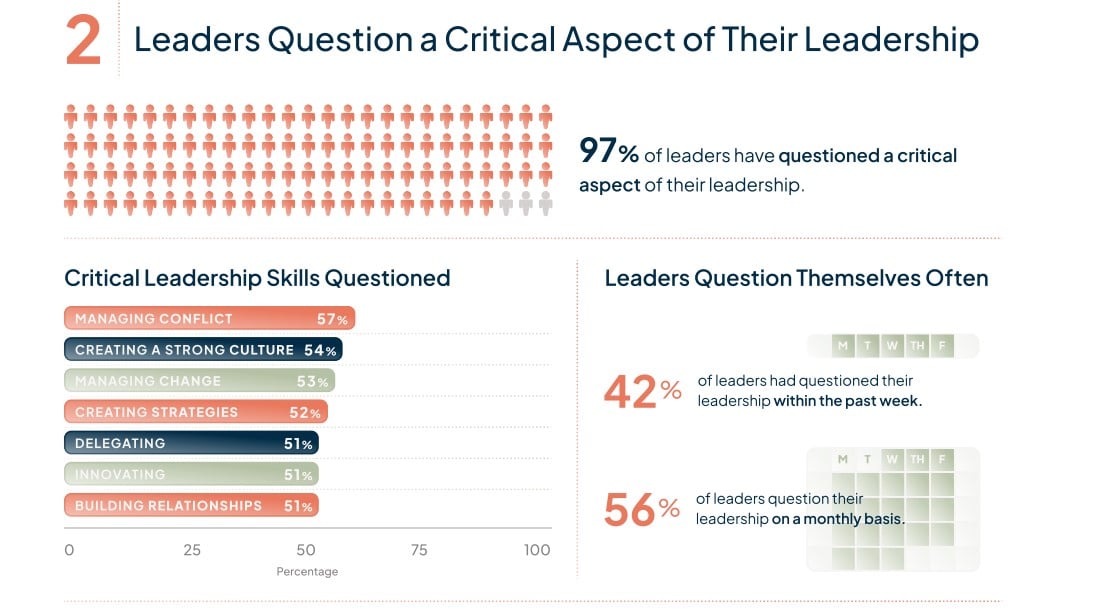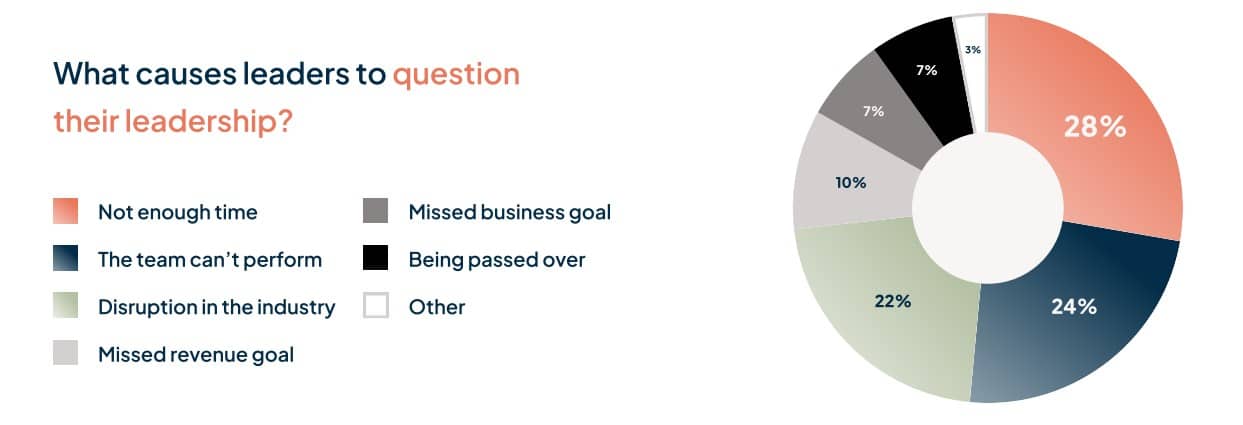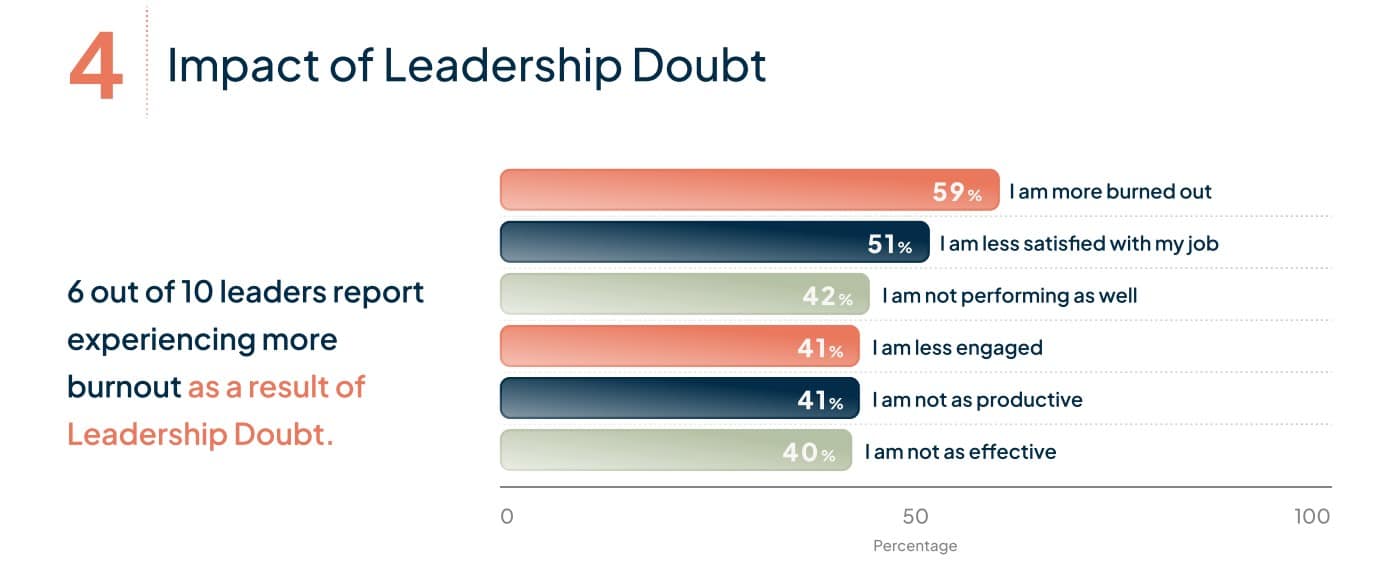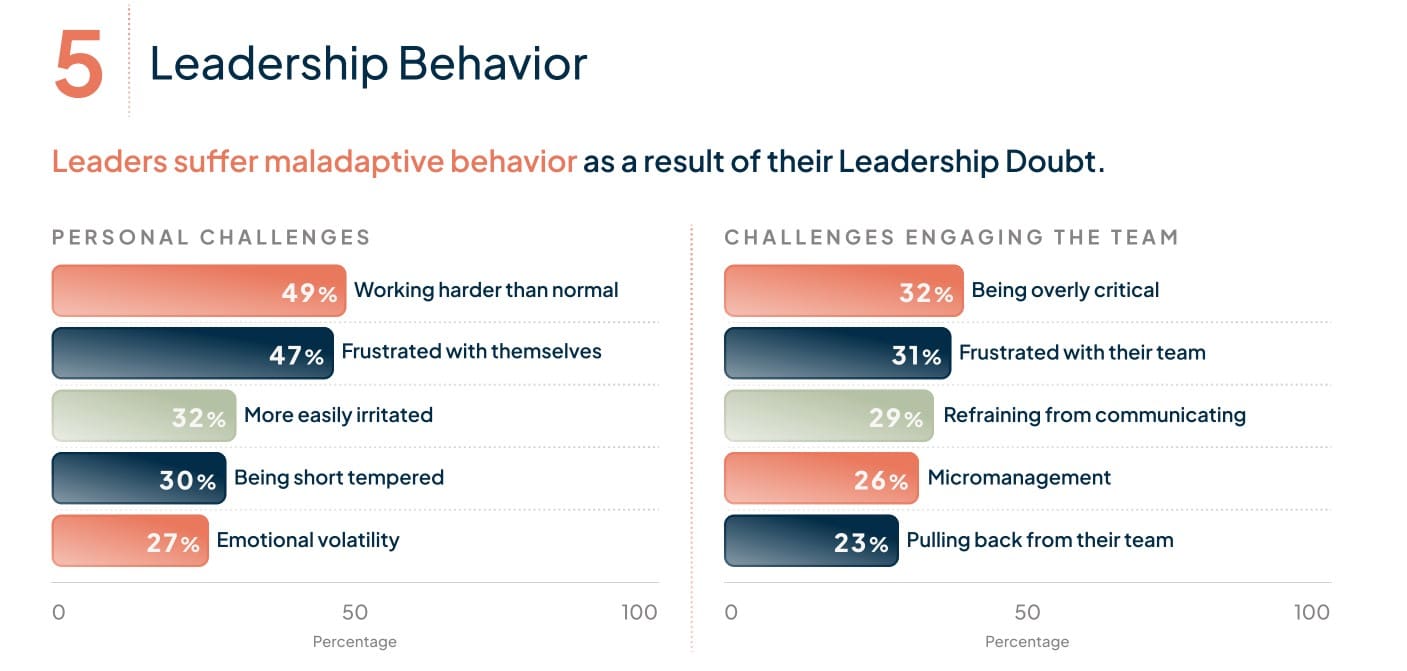Business leaders are dealing with unprecedented challenges in the post-pandemic world—struggling to manage a workforce that would rather be home, grappling with the heightened expectations of employees, including a rebellious sector of young and often entitled new recruits, and striving to meet the many Purpose mandates of all stakeholders. Throw in an unstable economic business landscape where the weight of every decision can be life or death, and you have even the most accomplished leaders second guessing their own every move.
New research from leadership development firm Robin Pou, with research partner Gradient, explores the implications of this newly discovered concept of Leadership Doubt. The firm’s first-ever Leadership Doubt Index casts light on the condition and reveals significant implications for leaders and their companies as they navigate increasing uncertainty.

“All successful leaders experience what we call Leadership Doubt,” said Robin Pou, author, executive coach, and founder of the Leadership Doubt Index, in a news release. “This new research is important because ‘imposter syndrome’ has been the only concept to describe any form of uncertainty about one’s professional role, yet we found top leaders do not resonate with that term. Executives actually feel extremely qualified for their roles, but they question their leadership abilities in specific situations, and this devolves into full-blown doubt.”

For over a decade, Robin Pou has worked with top leaders across the country to identify their doubt and deploy specific strategies that accelerate an increase in their confidence. Now, the new findings shine a new light on how doubt is a huge issue plaguing executives, but has remained under the radar until now due to leaders’ fear of looking weak or losing credibility.
“This groundbreaking research is an important milestone on the path to normalize the concept of Leadership Doubt,” said Pou.“If leaders can identify their doubt, they can develop strategies to overcome it so they can lead effectively.”

Key takeaways from the research:
Successful leaders question a critical aspect of their leadership and experience Leadership Doubt
- 97 percent of successful leaders have questioned an aspect of their leadership
- 92 percent do not associate with the term “imposter syndrome,” which is currently the primary term used to articulate a feeling when leaders are uncertain about their abilities
- A majority of leaders (56 percent) question an aspect of their leadership on a monthly basis
- The top-3 leadership skills questioned are managing conflict (57 percent), establishing a thriving culture (54 percent), and managing change (53 percent)
- Over half (54 percent) experience long-term, chronic leadership doubt
Workload and team performance issues were the most commonly reported triggers of Leadership Doubt
- The top-3 triggers for successful leaders questioning their abilities: managing a huge workload (28 percent), a team’s inability to perform (24 percent), and industry disruption (22 percent)
Leaders don’t typically like to discuss their Leadership Doubt
- The top 3 reasons leaders don’t discuss doubt: fear of losing credibility (29 percent), looking weak (29 percent), and believing they must have all the answers (28 percent)
Leadership Doubt has significant negative impacts
- Leadership Doubt has had a significant impact on a leaders’ effectiveness to innovate (61 percent), create a compelling vision (59 percent), and delegate (58 percent)
- 32 percent of leaders attribute negative revenue growth to their leadership doubt
- Top Leaders (business owners, founders, presidents, and C-suite executives) are significantly more likely than Established Leaders (vice presidents and directors) to report negative impact on overall performance and revenue growth.
- A majority of leaders who experience Leadership Doubt report it has caused them to feel more burned out (65 percent) and have less job satisfaction (55 percent)
- The most frequent maladaptive coping mechanisms are a tendency to be short-tempered (35 percent) and overly critical (33 percent)
Despite efforts to resolve their Leadership Doubt, leaders face an overwhelming doubt about their overall fitness for leadership
- A shocking 41 percent have considered changing jobs as a result of Leadership Doubt, and slightly over half (51 percent) wonder if they can be successful as a leader going forward

“We’ve worked with some of the best brands in the world, and this research project stands out from the pack in both its rigor and its results,” said Kyle Block, head of research at Gradient, in the release. “When Robin and his team approached us with an idea to quantify something that has never been quantified before, we were excited to deploy our global team of market researchers and data scientists to create this research study and identify the fascinating and far-reaching implications of Leadership Doubt.”

Download the full report here.
The survey was fielded August 18 – August 28, 2023. The sample comprised 601 US business leaders from various industries ranging from Director-level roles to the C-suite, and those who manage 2+ direct reports at companies with $10M or more in revenue. Eighty percent of the respondents work at companies with $100 million or more in revenue, and respondents had an average of six direct reports. Top industries represented by respondents were: technology, manufacturing, construction, retail, and healthcare.








